1.1 Take That | عليهم On the 17th of October, the first night of the Lebanese uprising, I witnessed the anger of the people who took to the streets, voicing their dissent against the corruption of the Lebanese political system. Within hours of the first protests, the video of Malak kicking the bodyguard of a Lebanese politician went viral online. As an artist in diaspora who couldn’t be physically present with the youth on the street, I felt I should participate in the way that I could: through the mediums that I love, Art and Design. Spontaneously, I began to create with the desire to embody Malak’s strength and bravery. Instead of using the cliche colors of the revolution- the Lebanese national colors - I chose to employ vibrant and warm colors in the foreground, and their complementary cold colors in the background. I used Malak’s iconic image and a title, “Take That”. I noted how social media played an important role in the dissemination of the people’s resistance, so I added the “Heart” which represents a “Like” on Instagram, to affirm the desire and will of the people. To me, this image represents the person vs the gunman, the citizen vs political convoy, the woman vs oppressor. 2019
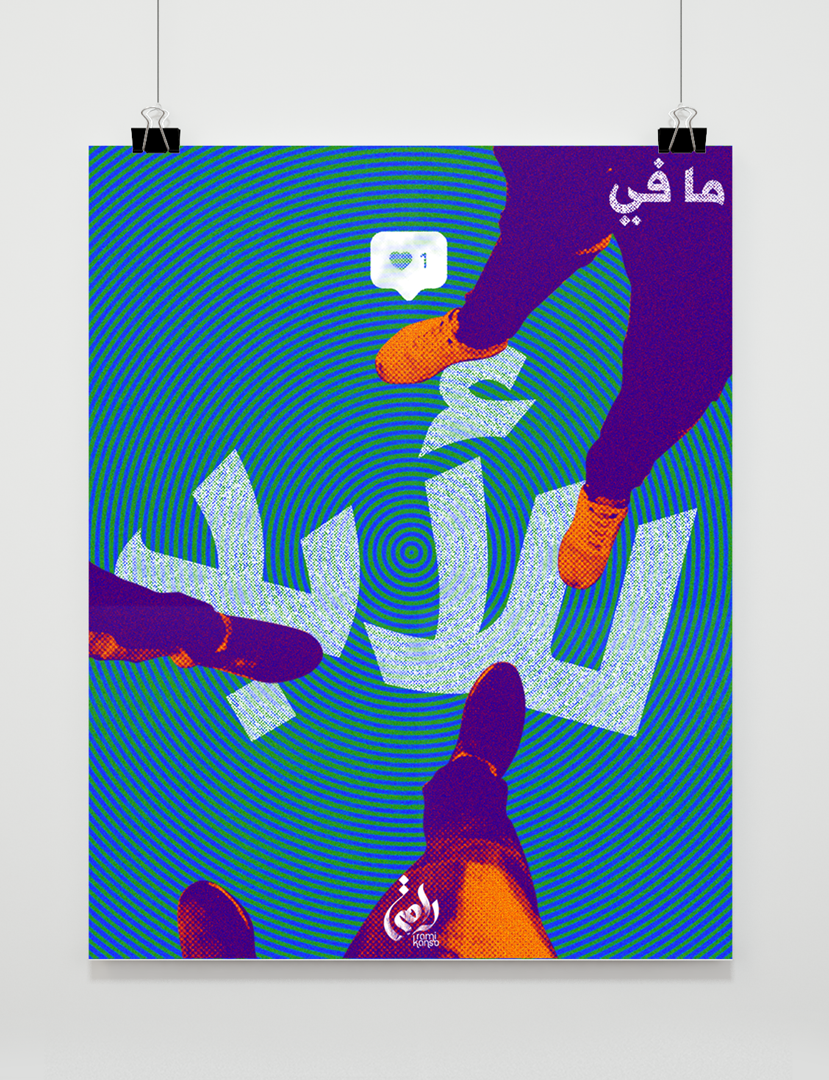
1.2 Nothing Lasts Forever | ما في للأبد I observed as citizens tore down the posters of sectarian leaders, which once littered the streets and highways. An image surfaced which captured the power of the people; stepping on the faces of those who sold out the care of the country in order to fill their own pockets. 2019
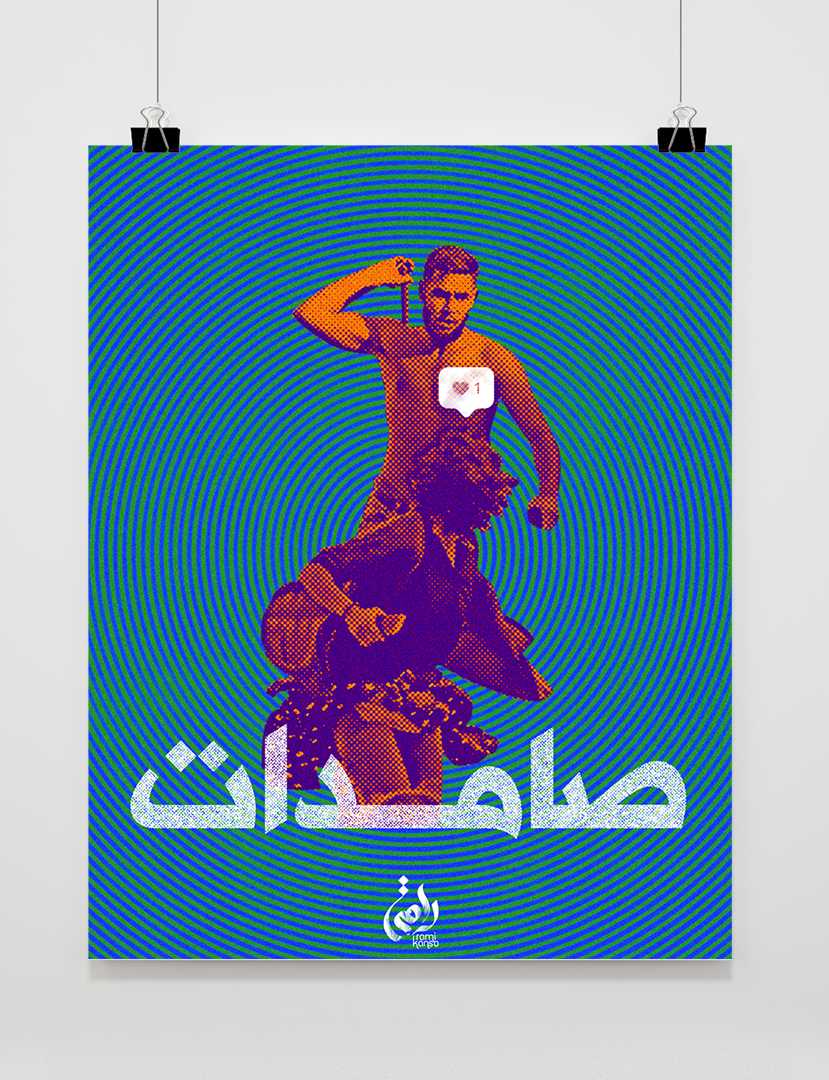
1.3 She Persists | صامدات On the 29th of October, counter-protestors attacked peaceful demonstrators in Martyr’s Square, torching their tents. A photo surfaced by Marwan Tahtah, of a woman attacked by one of the sectarian thugs. Praise to the power and bravery of female protesters, who courageously stand their ground against violent oppression 2019
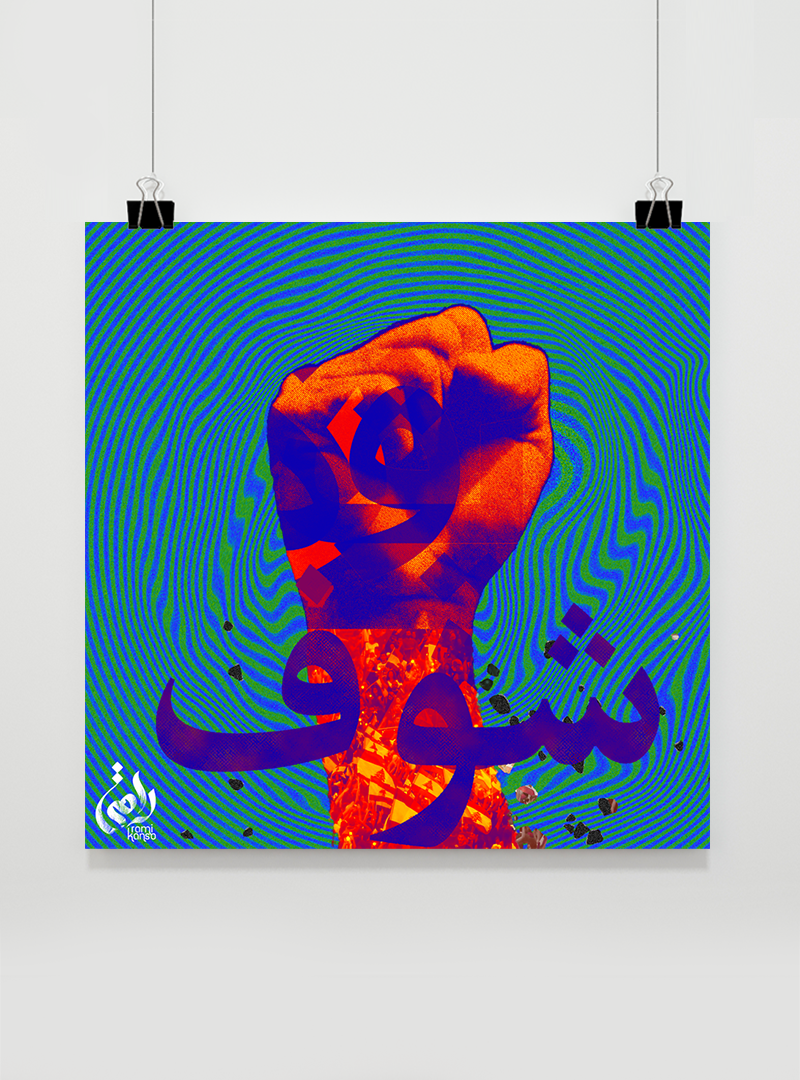
1.4 Look | شوف Two weeks into the Revolution, the Lebanese Hip Hop rapper El Rass contacted me to create a design for a new single. “Look” is the name of the song, a direct address to both: the people, and the leaders who failed them. 2019
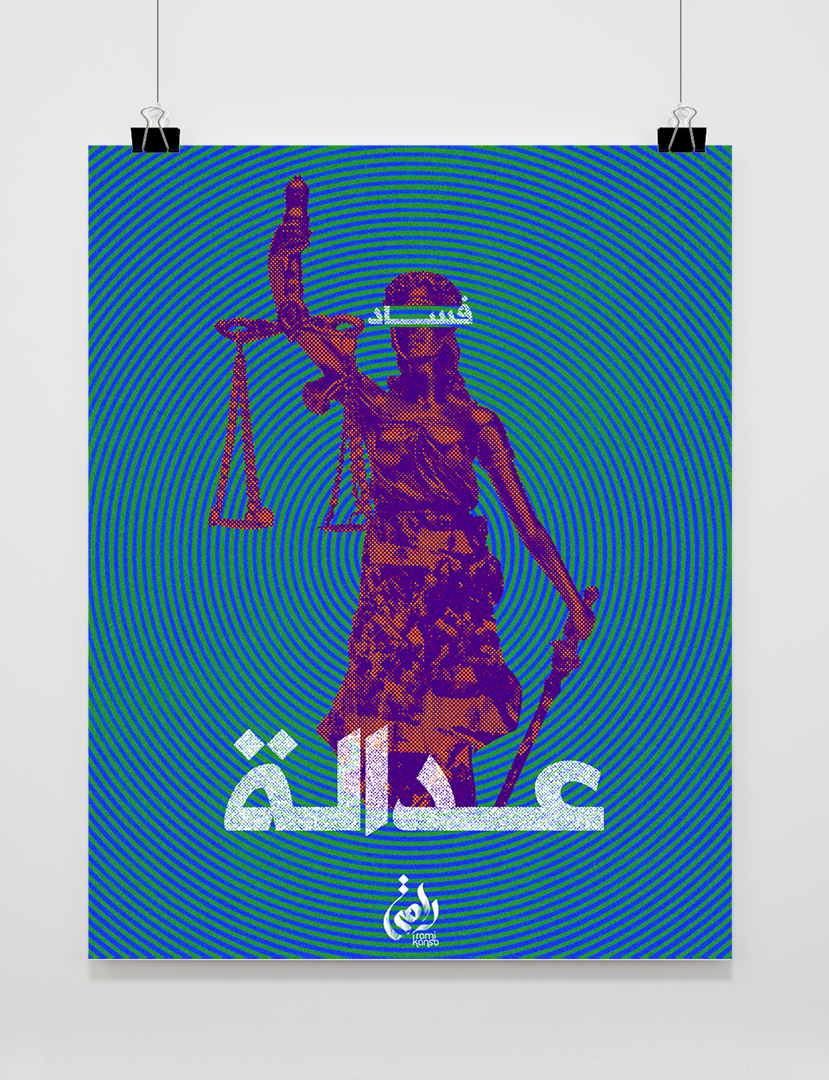
1.5 Justice | العدالة On the 19th of November, one month into the Lebanese Revolution, those attempting to hold on to what remained of their political power scheduled the passing of a “Pardon Law”. Here, Lady Justice is blindfolded, not by impartiality, but by Corruption. 2019
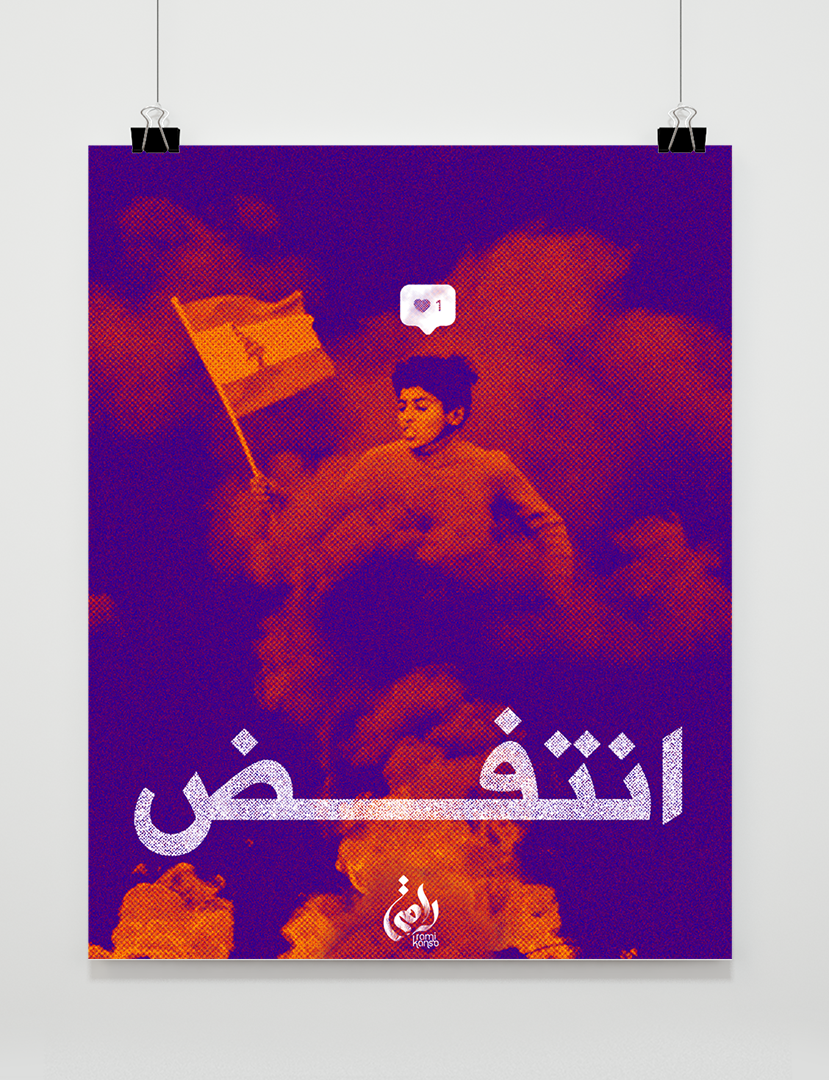
1.6 Rebel | انتفض Between the 17th of October and the 4th of November, Lebanese authorities detained around 300 protesters in Beirut and Tyre, among them at least 12 minors. Students closed their schools and universities, and protested in front of the Ministry of Education, as well as other public administration buildings. 6 of November marked the “Students’ Day” when youth across Lebanon raised their voices for a better future. Said one, “On this day I won’t be learning history, I will be writing it”. 2020
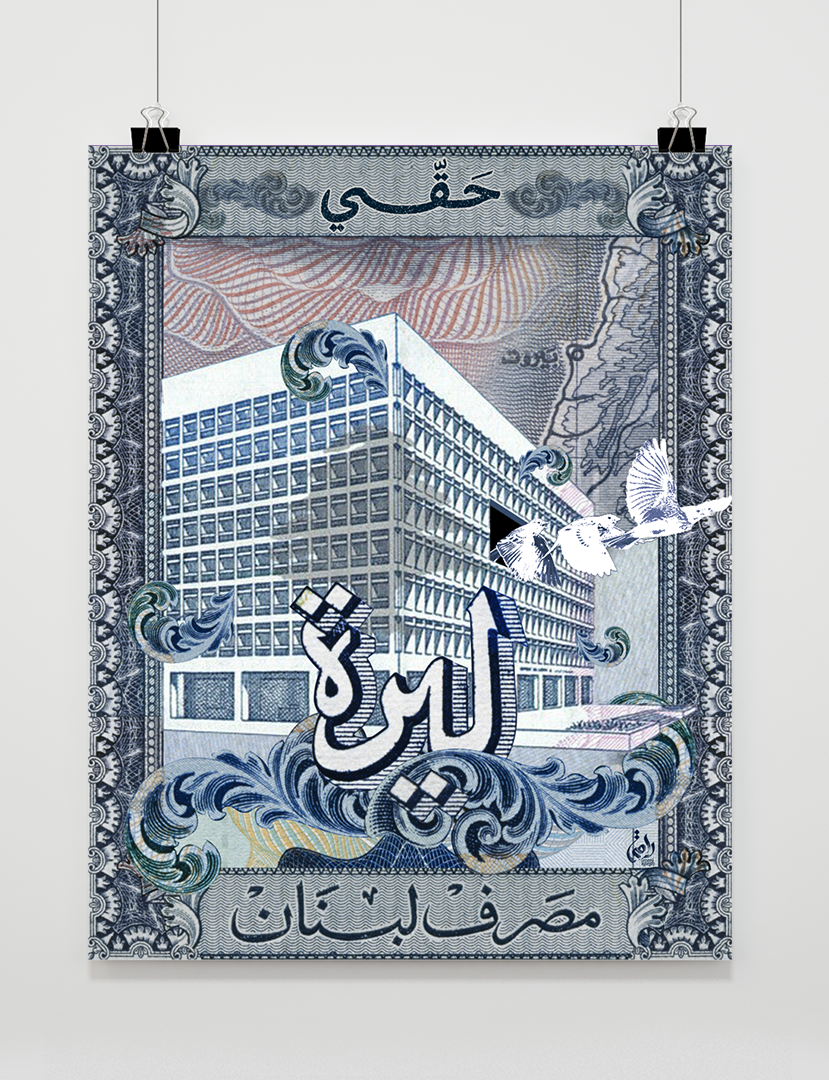
1.7 Central Bank | حقي المصرف المركزي Homage to the Lyra and the Lebanese National Currency, which, 6 months since the revolution, has been devalued to a third of its original value. People have been calling to free the National Bank from the oligarchy. 2020
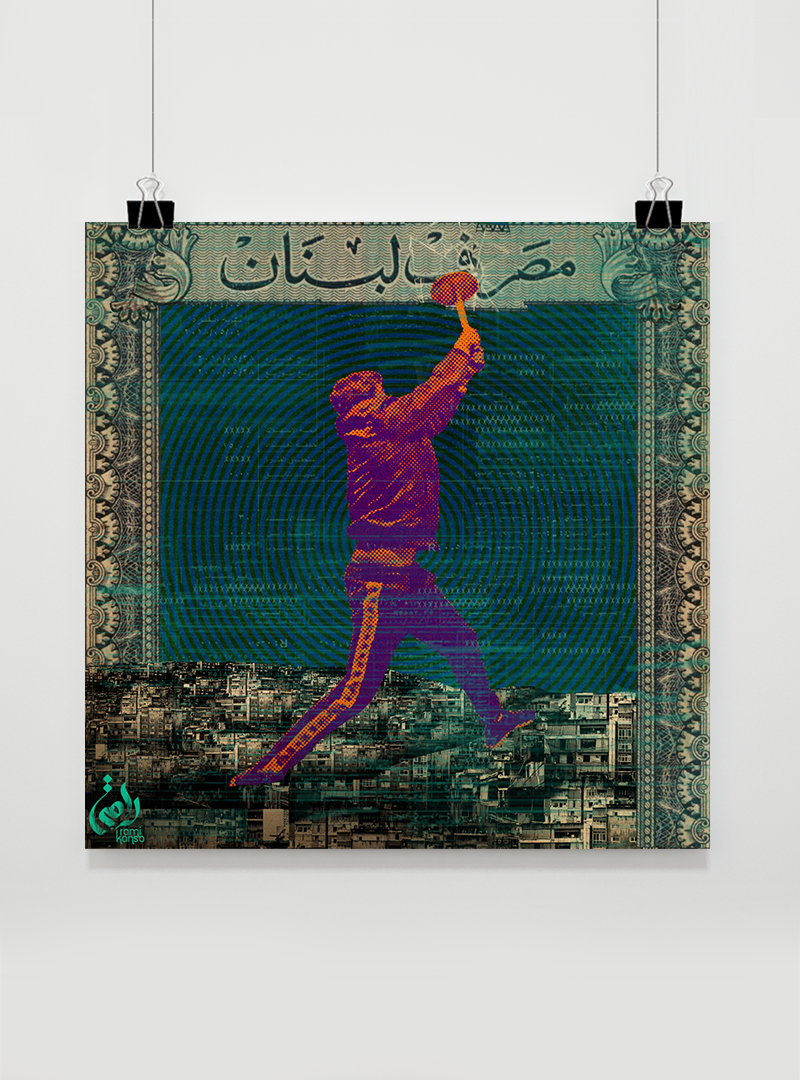
1.8 Ali | علي Almost 6 months after the Lebanese Revolution began, rapper El Rass asked me to create cover art for another track, named after Ali Shuaib, the Lebanese “Robin Hood”. In 1973, Ali Shuaib raided Bank of America in Beirut, and from the roof of the bank, liberated 10 million dollars into the streets below. 2020
1.9 & Wheat | وقمح
Memorial Design of the wheat silos at the Port of Beirut, built in the 1960’s by “the genius from Jerusalem” Yusuf Beidas.
The westward face of the silos still proudly intact, they stand, resilient guardian angels, having protected the city from the explosion of Ammonium Nitrate on August 4th, shielding much of the Corniche and West Beirut from one of the largest non-nuclear blasts in history.
Text inspired by Fairuz & Ziad Rahbani’s instrumental وقمح. A tribute to Syria, Iraq, and Lebanon: three lands with thousands of years of agricultural history, today suffer from shortages of Wheat.
In the Levant, Wheat remains a symbol of generosity, abundance, charity, and rebirth.
2020



